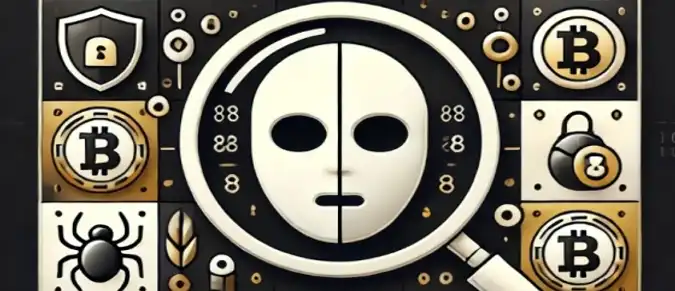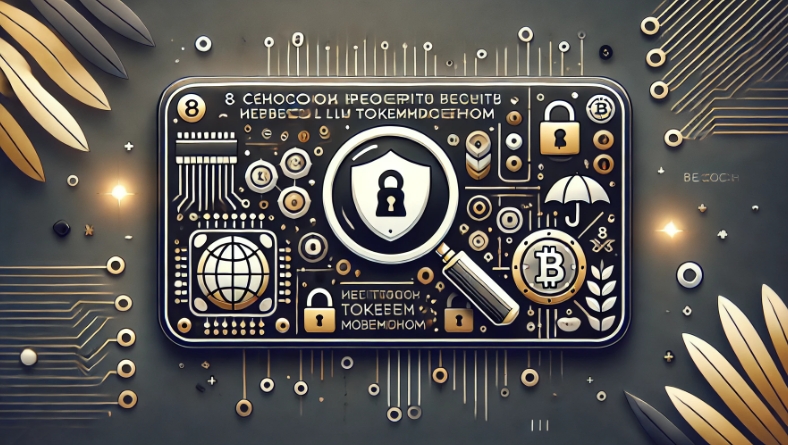Cryptocurrencies and tokens are becoming increasingly popular, attracting investors and enthusiasts from around the world. However, with the rise in popularity, the number of fraudulent projects is also increasing.
Contents:
- 1.1 Check social networks for suspicious signs
- 1.2 Check the token address on Google
- 2. Check the code confirmation on Etherscan
- 3. Check the comments section on Etherscan
- 4. Check the blacklists on DappRadar
- 5. Check token details in the token explorer
- 6. Check how many exchanges the token is listed on
- 7. Check the liquidity volume in the token pool
- 8. Check third-party analysis tools
- Conclusion
1.1 Check social networks for suspicious signs
Verified accounts on Twitter can confirm the legitimacy of a project. Participate in token discussions to get the community's opinion.
Beware of projects with a large number of followers but low engagement levels. Automated comments from spam accounts, such as "Great project" or "To the moon soon," are also a red flag.
1.2 Check the token address on Google
If you can't find a clear homepage, whitepaper, or a clear purpose for the token, it could be a scam. The token address should lead to a block explorer, official website, and whitepaper.
Avoid clicking on ads in Google, as they may lead to fraudulent sites. Make sure you only visit official sites to avoid fake resources or malicious software.
2. Check the code confirmation on Etherscan
Visit the block explorer for your chain and check if the source code is verified. For example, on Etherscan for Ethereum, it looks like this. If the code is not verified, it's a serious sign of potential fraud.
Why do scammers avoid code verification?
When the source code is available, it can reveal its purposes, such as inadequate tax systems or ways to steal tokens.
Not every unverified contract is a scam, but it's a significant red flag.
3. Check the comments section on Etherscan
Block explorers often have a comments section. If the project is fraudulent, there may be negative reviews in the comments. Check this section: if someone calls the project a scam, it likely is. If you've been a victim, leave a comment.
4. Check the blacklists on DappRadar
DappRadar allows the community to help identify fraudulent tokens. If you find a fraudulent token, you can submit it to the token blacklists on Github.
Also, when researching tokens, check the blacklist to see if your token is on the list. If the token address is listed, it's a scam.
5. Check token details in the token explorer
If a token is not found on CoinGecko or DappRadar, it may indicate a scam. If the token is present in the explorer but you see warnings, be cautious.
Legitimate tokens usually share information with Token Rankings for verification. But CoinMarketCap and CoinGecko may require certain criteria, so not all tokens are automatically included in their lists.
6. Check how many exchanges the token is listed on
If the token is traded only on a few decentralized exchanges (DEX), it could be a scam. Tokens listed on centralized exchanges undergo KYC and are more trustworthy.
A token present only on a decentralized exchange is not necessarily a scam but represents a riskier investment. In the image on the left, the token is only on decentralized exchanges; on the right, it is on several centralized exchanges.
7. Check the liquidity volume in the token pool
Before investing in a token, check the liquidity on platforms like Uniswap V2. Liquidity is the amount of cryptocurrency or tokens in smart contracts that allow asset exchange through exchanges. If the liquidity is less than $100,000 or quickly dropping, it could be a scam.
DappRadar provides warnings about tokens with low liquidity. Also, pay attention to other on-chain activity indicators on decentralized exchanges:
| Indicator | Description |
|---|---|
| Transaction volume | The amount of tokens exchanged in dollar equivalent. |
| Number of transactions | The number of token exchanges. |
| Unique active wallets | The number of users connecting to the decentralized exchange. |
Unusual indicators may suggest problems. On DappRadar, you can find all decentralized exchanges through the DeFi TVL rankings.
8. Check third-party analysis tools
Here are some tools for analyzing tokens:
- Smell Test — automatic token audit. A low score out of 100 indicates a high likelihood of fraud.
- Honeypot fraud — smart contracts with intentionally inserted vulnerabilities. When attackers try to use it, hidden code attacks them. Such contracts should be avoided.
- DEXtools — tracks current token prices and helps assess their real-time value.
Conclusion
Investing in cryptocurrencies involves high risks, and one such risk is the possibility of encountering a fraudulent token. By using the verification methods described above, you can significantly reduce the likelihood of becoming a victim of fraud and protect your investments. Remember, thorough research and caution are key factors in successful cryptocurrency investment.






